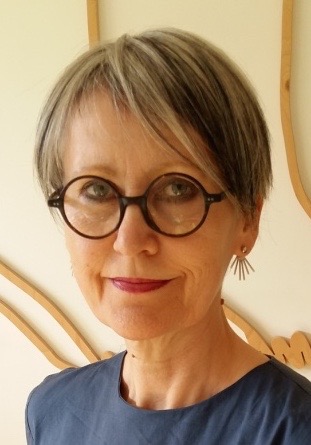Anxiety And Boredom, Excitement And Patience
- Elise V Allan

- Jun 10, 2020
- 3 min read
first published November 2018

I wrote before about Mihaly Csikszentmihalyi’s ideas on flow, with his diagram indicating that it occurs when challenge and skill levels are balanced; too much challenge for our skills will raise anxiety while too little will bring boredom.
Oscar Wilde once said, “The anxiety is unbearable. I only hope it lasts forever.” This appealed to me, and I was left wondering whether he was aiming to provoke more than just amusement. Perhaps the bizarre thing about living a creative life is how much enjoyment there is in striving for something that feels slightly out of reach. Certainly, I love a good tussle with a painting, and when it resolves too soon - not that this happens often - I feel the lack of being stretched. Years ago, when I had been caught in indecision, having liked my first marks in a painting and unsure about whether to leave it or continue to develop it, a friend had suggested that I was caught in the Scottish Presbyterian work ethic. But over time, it’s become clearer that something in me enjoys the depth of engagement called on by a bit of a creative fight. I don’t know if this is what Oscar was referring to.
Yesterday I came across a quote from Fritz Perls, scribbled down on a post it note, while listening to a talk on Feldenkrais.
“Anxiety is excitement without breathing.”
Perhaps it was excitement that Oscar Wilde hoped would last forever. When I’d first heard it, it had brought back memories of holding my breath while I painted, thus converting excitement into anxiety. I’d been aware that something fundamental had changed for me over the years, but only now am I recognising that probably the greatest shift is that I breathe more while I paint, which has made it easier to start and to keep going. And the simplicity of it! If the challenge is too great for my skills, and I get caught in anxiety, I can breathe. A good deep breath loosens my tight thinking, and allows me to access more of what I see, understand, and sense.
I’m working on a series of small paintings at the moment. The last blog about the ToDon’tList had come back to me as I realised I felt a bit overwhelmed by about twenty unresolved paintings on my wall and desk, as well as the ones on the easels, and I resolved to put all but four or five at a time out of sight. More than a few of them were doing and saying very little.
One in particular had nothing happening in it that spoke to me. I could have chosen boredom. But instead, I was intrigued by it. Almost intrigued by not being intrigued. Intrigued by the nothingness of it. And I gave it time, and more time, every now and again changing something that I didn’t really like in it, and I continued to care about it, just waiting.
It was like when you’re drawn to someone and they don’t notice you; but you don’t feel needy or desperate, you just hope that there will be a connection. I had experienced that with a friend’s little girl – she was cute, and I liked her, but she was shy of strangers, and I didn’t see her very often. So the warmth and patience in me waited, and as I didn't want to frighten her by looking at her too directly, I had a lightly held sense of her in my peripheral vision, even as I talked to the other grown ups. And one day we were both excited about her new blue shoes and when I admired them, we had our opening. She took my hand and led me on a little walk, to show me all the exciting things in the café, then up and down the street, and we were friends.
It was the same with the painting; something patient and warm in me waited, despite its apparent lack of interest in me. And one day the painting and I both got excited about putting some dark blackish green around other areas. That was the opening. And from there, I was able to follow where the painting wanted to lead me, finding out what excited it.
Flow is sometimes a torrent, and sometimes a trickle, but as Carole King said, “I have found that the key to not being blocked is to not worry about it. Ever.” And the keys that I would add, are to breathe, and although keeping going with other things, to wait patiently, sensing on the peripheral vision whether the tiniest of openings is ready to happen.




Comments